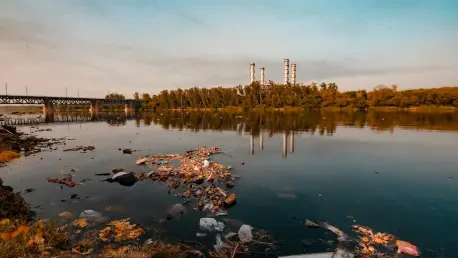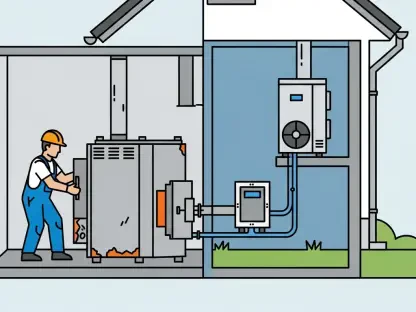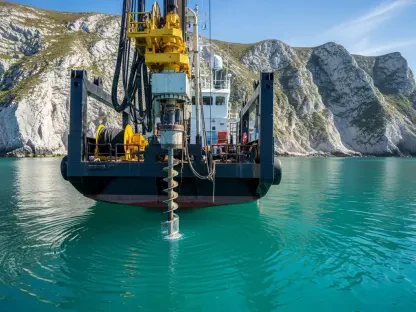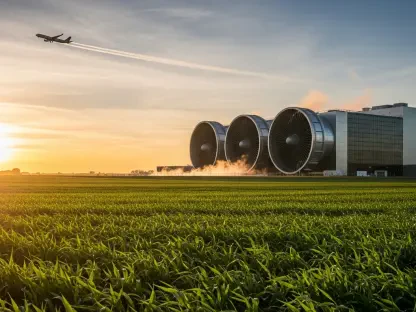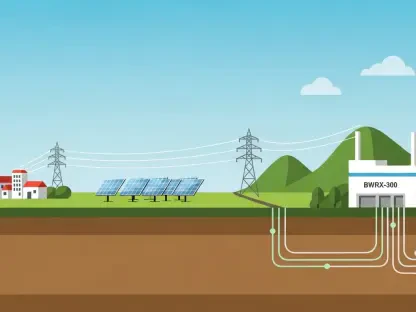Imagine a city choking under the weight of its own waste, where rivers bear the brunt of pollution and landfills overflow with discarded resources, while Delhi, with its sprawling urban expanse, faces this harsh reality every day. Generating thousands of tons of waste daily, the city demands urgent, sustainable solutions to manage this overwhelming burden. The recent launch of the city’s first large-scale biogas plant at Nangli Dairy has sparked hope and conversation among environmentalists, policymakers, and industry leaders. This roundup gathers diverse perspectives, tips, and opinions from various stakeholders to explore how this pioneering facility is reshaping waste management and whether it can serve as a model for urban sustainability. The discussion delves into the plant’s impact, challenges, and the broader implications for green energy in one of India’s most polluted capitals.
Exploring the Nangli Dairy Biogas Breakthrough
What Experts Are Saying About Waste-to-Energy Potential
Industry professionals have hailed the Nangli Dairy biogas plant as a game-changer for managing dairy waste, a long-standing environmental concern in Delhi. The facility processes 200 metric tons of cow dung daily, converting it into 5,600 kg of compressed natural gas (CNG) and 30 tons of compost. Many in the energy sector emphasize that this dual output not only addresses waste disposal but also contributes to the city’s renewable energy goals, reducing reliance on fossil fuels.
Environmental advocates point out that the plant, built with a Rs 16-crore investment, showcases the power of public-private partnerships. Collaboration with Indraprastha Gas Limited (IGL) for CNG distribution has been a key factor in operational success. However, some caution that the current trial phase, handling just 25 tons daily, reveals scalability challenges that must be addressed to reach full capacity soon.
A differing view comes from urban planners who stress the need for integrating such projects into broader city frameworks. They argue that while the technology is promising, its success hinges on a consistent waste supply and infrastructure support. This mix of optimism and pragmatism underscores the complex journey of turning waste into wealth.
Tackling Pollution: A Unified Goal with Varied Approaches
Perspectives on pollution control through the Nangli Dairy initiative reveal a shared commitment but varied strategies. Environmental groups highlight how the plant curbs the harmful practice of dumping cow dung into drains, which has long polluted the Yamuna River. The systematic collection at Rs 656 per metric ton from dairy owners is seen as a practical step toward cleaner waterways and reduced landfill strain.
Some waste management consultants, however, express concern over potential resistance from dairy owners unfamiliar with structured disposal systems. They suggest that awareness campaigns and incentives could bridge this gap, ensuring wider participation. This viewpoint emphasizes community engagement as a cornerstone of environmental progress.
On the other hand, civic authorities view the initiative as a scalable solution to urban pollution. They point to the plant’s role in transforming a nuisance into a resource, advocating for similar facilities in other dairy-heavy zones. This diversity of opinions reflects a collective push for cleaner cities, tempered by the need for tailored implementation strategies.
Scaling Up: Opinions on Biogas Expansion in Delhi
Future Plants and Infrastructure Growth
The momentum for biogas infrastructure in Delhi has garnered attention from various quarters, with upcoming plants at Gogha and Goyla dairies, each with a 200-metric-ton capacity, under construction. Industry observers note that these facilities, expected to be operational within the next couple of years, signal a strong commitment to waste-to-energy solutions. Their completion will significantly boost the city’s capacity to handle dairy waste.
Municipal leaders also spotlight parallel efforts by the Municipal Corporation of Delhi (MCD), which is rolling out decentralized biomethanation plants in areas like Ghogha, Okhla, and Ghazipur. These units, processing 750 metric tons of wet waste daily for methane gas production, are praised for addressing diverse waste streams. Yet, some question whether this rapid expansion can match the pace of Delhi’s escalating waste generation.
A more cautious stance comes from sustainability analysts who stress the importance of long-term planning. They argue that while new plants are a step forward, consistent monitoring and funding are essential to prevent delays, as seen in past projects. This blend of enthusiasm and critical foresight paints a nuanced picture of Delhi’s biogas ambitions.
Economic and Environmental Balance: Diverse Perspectives
The economic and environmental benefits of the Nangli Dairy plant have sparked a range of reactions. Agricultural experts commend the production of 30 tons of compost daily, which supports farmers by enhancing soil fertility and promoting sustainable farming. This aspect is often cited as a hidden gem of the project, fostering rural-urban synergy.
Energy sector voices focus on the revenue potential from CNG sales, viewing the plant as a model for financial viability in green projects. They suggest that reinvesting profits could fund further eco-friendly initiatives, creating a self-sustaining cycle. This optimism is tempered by calls for transparent economic assessments to ensure equitable benefits.
Contrasting opinions emerge from policy analysts who compare Delhi’s approach to global waste-to-energy models. While acknowledging the dual gains of pollution control and resource creation, they urge a balanced focus on environmental impact over short-term profits. These varied insights highlight the intricate balance between economic returns and ecological priorities.
Key Takeaways from Delhi’s Biogas Journey
Synthesizing the opinions on Delhi’s biogas initiatives reveals a consensus on the transformative potential of the Nangli Dairy plant. Environmentalists, industry leaders, and civic bodies agree that converting waste into CNG and compost addresses critical urban challenges like pollution and resource scarcity. The facility stands as a blueprint for integrating technology with sustainability goals.
Practical tips from stakeholders include fostering public-private collaborations to replicate such projects elsewhere. Community involvement is another recurring theme, with many advocating for education drives to encourage waste segregation and participation among local dairy owners. These actionable steps are seen as vital for amplifying the plant’s impact.
A broader takeaway is the need for continuous innovation in waste management. Experts across fields suggest that Delhi’s efforts could inspire other cities if supported by robust policies and public awareness. This collective wisdom offers a roadmap for urban centers grappling with similar environmental burdens.
Reflecting on a Milestone in Urban Sustainability
Looking back, the launch of Delhi’s first large-scale biogas plant at Nangli Dairy marked a turning point in addressing the city’s waste crisis. The diverse perspectives gathered highlight both the promise and the hurdles of this innovative approach. From pollution reduction to green energy production, the initiative has laid a foundation for meaningful change. Moving forward, the focus should shift to scaling these efforts through strategic partnerships and community outreach. Exploring similar waste-to-energy models in other pollution hotspots and advocating for supportive policies can ensure that this momentum endures. The journey ahead calls for sustained commitment to transform urban waste challenges into opportunities for a cleaner, greener future.
